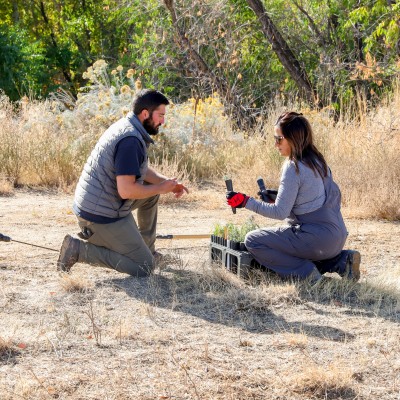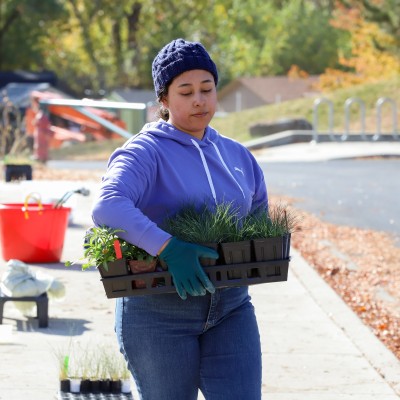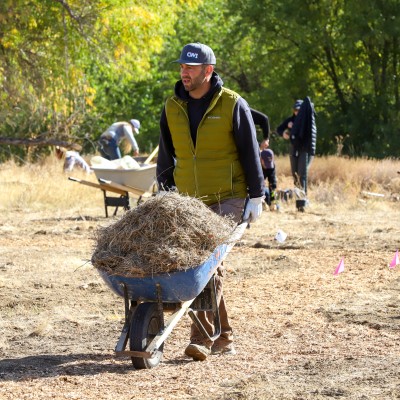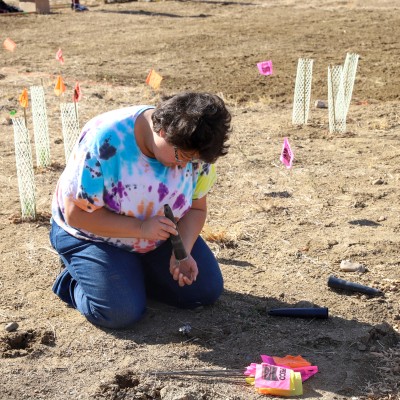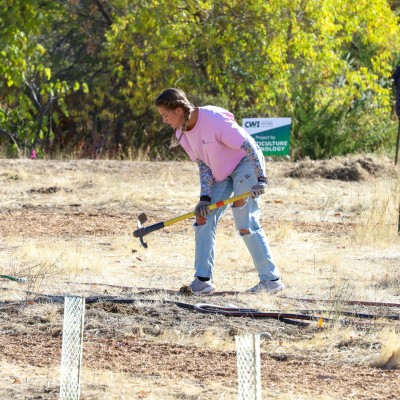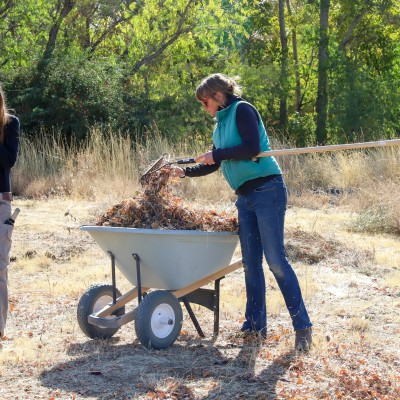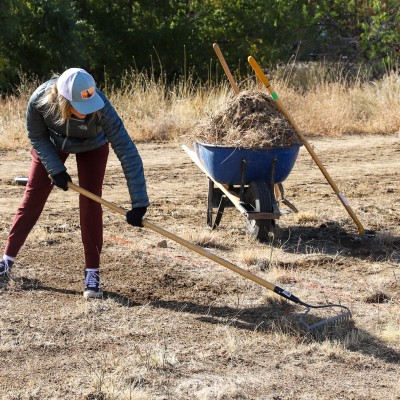College of Western Idaho (CWI) students and instructors have begun work to help restore acres of land along the Boise River.
CWI's Horticulture Technology program is involved with the Boise River Re-WILD project, which is a grassroots effort that seeks to protect and revitalize the habitat of more than 50 acres of land along the Boise River by 2023. The project is led by Golden Eagle Audubon Society, a local chapter of the National Audubon Society.
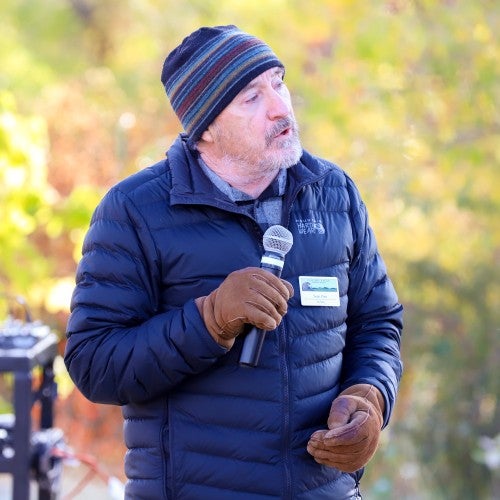
“Boise has changed a lot since 1840, with all types of development along the river,” said Boise River Re-WILD Project Lead, Sean Finn. “Over the course of those years we’ve lost a lot of biodiversity, particularly in our plant communities because of neglect. We’ve lost pollinators, our wildlife communities have become less diverse, and much more. We wanted to give people a way to get engaged to get some of that biodiversity back and give back to the river.”
CWI’s Horticulture Technology program is one of 100 community organizations that have adopted a half-acre plot and are working to remove invasive species, grow, plant, and maintain native plants, and monitor project outcomes.
The program’s plot of land is located at 5657 E. Warm Springs Ave., Boise, ID 83716, which is on Idaho State Parks and Recreation land, near the Idaho Shakespeare Festival.
The College’s Horticulture Technology program hosted Restoration Week to kick off their two-year-long community service project. The week-long event brought a lineup of industry experts and guest speakers, an exploration of the program’s plot of land, and a department-wide planting day.
“One of my favorite things about this project is we are practicing good ecological and environmental stewardship within an urban setting,” said CWI Horticulture Technology Instructor, Casey O'Leary. “It is a really unique place to do restoration work. It’s easy to think about nature being a place we have to travel to in order to take care of. It's really cool to be a part of a project where we get to do this work right here in our own community where urban people have access to this, and urban wildlife can be supported by this.”
Over the course of two years, multiple classes within Horticulture Technology program will visit the plot of land and take part in various restoration activities, like removing invasive species, planting, weeding, watering, and working to make sure plants are able to survive long after the project’s completion.

Horticulture Technology program students and instructors were able to plant around 900 plants on Thursday, Oct. 27.
“Before we started on the land it was just a field of weeds and an empty plot,” said Horticulture Technology student, Jaimon Strickland. “We’re bringing awareness to restoring native landscapes because through development and climate factors, we're losing a lot of landscapes. We are here to show the community what’s possible with a native landscape of restoration.”
CWI students will also engage in data collecting on the land to monitor the success of the project. They will take photos throughout the years and check in on their restoration efforts and experiments to see what is working. It will allow them to see what types of species will do well on their own after their restoration work is complete.
Those with questions or in need of more information about this project or Horticulture Technology, contact Casey O’Leary at caseyoleary@cwi.edu.


